

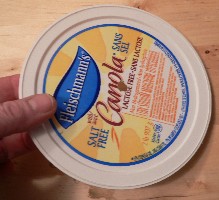
 You'll need a balloon, a margarine container lid, and some good glue. You'll also need a thread spool. Begin by cutting a hole in the centre of the lid that's the same size as the hole in the spool. Ideally you want one of the older type spools that's made from wood, and has a single hole down the centre. We couldn't find a single-holed wooden spool, so we used the newer plastic kind. The wide open centre of this spool caused a few problems ... the air needs to travel down the centre hole only. Unfortunately, the plastic spool doesn't glue well to the plastic lid. We solved the problem with a ring of plasticene, in addition to the glue, around the outer edge of the spool, which served to anchor the spool to the lid and keep the air from escaping around the sides. 
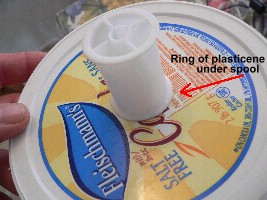 Blow up the balloon and give it several twists; the twists will keep the air from escaping until you're ready to release your hovercraft. Pull the end of the balloon over the entire spool, and pull it down onto the spool as far as you can. In the photos below, you can we that we didn't do this the first time. This made the balloon too floppy ... it tended to fall over and stop the flow of air. If we were to make another one, we would try supporting the balloon upright on either side with taped-on straws). 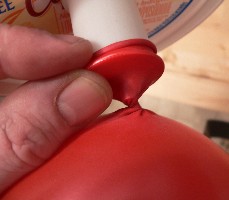
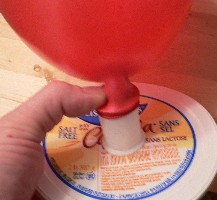 The hovercraft supported itself on the surface of the water and immediately started to move. As long as it remains upright, it will continue to move for a surprisingly long time ... especially if you try our suggestion about keeping the balloon upright. 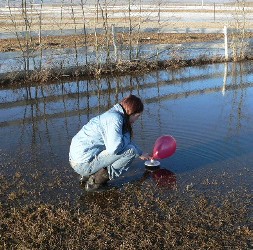
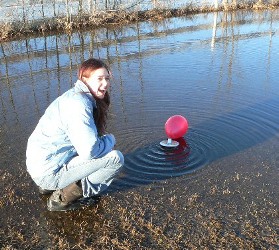 |
